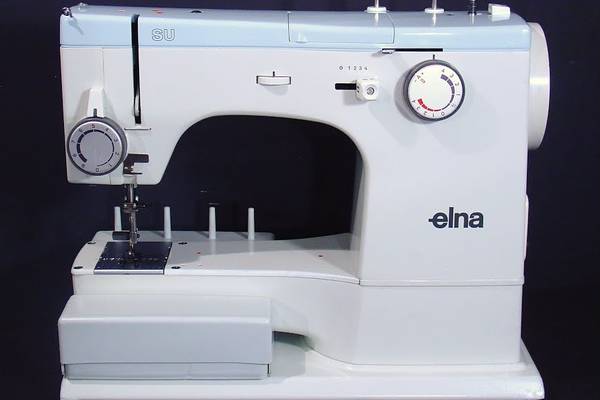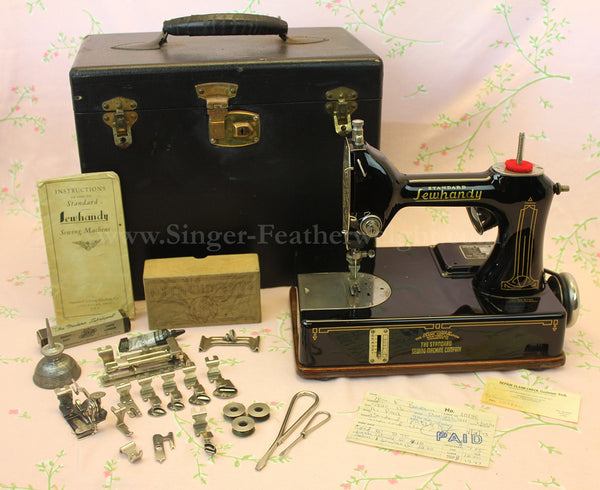- Singer Sewing Machine Serial Numbers
- Standard Sewing Machine Company Serial Numbers Generator
- Standard Sewing Machine Company Serial Numbers Number
- Standard Sewing Machine Company Serial Numbers Chart
The serial number on each machine will not be much help to you as there are no records to find the machine’s place in Domestic history. There is an old treadle machine produced by the company and it dates from 1863 to 1870. Locate the Sewing Machine Serial Number All sewing machines – even vintage models – have serial numbers imprinted on them. Usually, the serial number is located somewhere on small plate on the front panel of the machine. Once you have located the serial number, jot them down. Find the serial number on your sewing machine and write it on a piece of paper. Look for a numbered tag or a stamped number on the outside of your machine. Check the front, back, motor end and the bottom of the machine, in that order. On the throat plate or bed of the machine, up to a series of 8 numbers.
Serial number on lever plate is: 583369. The Standard Sewing Machine Company located in Cleveland, Ohio began manufacturing sewing machines in 1884. Standard was one of the many manufacturers that started up shortly after the dissolution of the sewing machine combination of Singer, Wheeler & Wilson, and Grover & Baker.
Order by 12/17 with Expedited Shipping for delivery by 12/24! SHOP MACHINES SHOP GARMENT CARE Holiday Shipping Cut-offs
Find the Perfect Match! Accessory Finder Machine Finder See Details
Lowest Prices of the Season, Machines Starting at $99! Plus all orders ship FREE with standard delivery (excludes HI and AK).

Please note: sewing machine orders arrive in SINGER branded packaging, so if this is a surprise gift please plan accordingly. Thank you!
If your order contains gift items, we suggest that you order by 12/10 (Standard delivery) and 12/17 (Expedited). Due to tremendous demand during the holidays, it is not unusual for our delivery carriers to experience slight delays. While your order may arrive in time, we cannot guarantee it.
Find your perfect match
Not sure which machine is right for you, or which accessories are compatible with your machine? No problem. Our Machine Finder and Accessory Finder make it fast and easy.
Thanks for shopping SINGER and sharing the gift of sewing this holiday season!
Standard Sewing Machine Company
- A machine with a mechanically driven needle for sewing or stitching cloth
- a textile machine used as a home appliance for sewing
- A sewing machine is a textile machine used to stitch fabric,paper,card and other material together with thread. Sewing machines were invented during the first Industrial Revolution to decrease the amount of manual sewing work performed in clothing companies.
- Any mechanical or electromechanical device used to stitch cloth or other material; normally uses two threads to form lock stitches
sewing machine
- A required or agreed level of quality or attainment
- An idea or thing used as a measure, norm, or model in comparative evaluations
- a basis for comparison; a reference point against which other things can be evaluated; “the schools comply with federal standards”; “they set the measure for all subsequent work”
- criterion: the ideal in terms of which something can be judged; “they live by the standards of their community”
- conforming to or constituting a standard of measurement or value; or of the usual or regularized or accepted kind; “windows of standard width”; “standard sizes”; “the standard fixtures”; “standard brands”; “standard operating procedure”
standard

- A person or people seen as a source of such friendship and enjoyment
- an institution created to conduct business; “he only invests in large well-established companies”; “he started the company in his garage”
- small military unit; usually two or three platoons
- The fact or condition of being with another or others, esp. in a way that provides friendship and enjoyment
- be a companion to somebody
company
322 West 85th Street House

 Upper West Side, Manhattan, New York City, New York, United States
Upper West Side, Manhattan, New York City, New York, United StatesSinger Sewing Machine Serial Numbers
Situated on the south side of West 85th Street between West End Avenue and Riverside Drive, the distinctive three-story 322 West 85th Street House — one house in a row of six houses — was planned by the noted architect Clarence True and was constructed for speculator-builder Charles G. Judson in 1892, at a time when the blocks in the West Eighties between West End Avenue and Riverside Drive were first developed. The overall design composition of this house is part of the A-B-A-A-B-A facade pattern of the row, and the 322 West 85th Street House represents a refined example of the Italian Renaissance style adapted to the requirements of the American basement plan, popularized on the Upper West Side by the architect Clarence True. This facade is a well-conceived and finely executed design. Its spare and well-cut ornament demonstrate great respect for the inherent quality of its exterior fabric — Maynard red sandstone, light orange Roman brick, and red pantiles. Indeed, the polychromy of these materials is an essential element of the facade’s design. No. 322 West 85th Street has been changed very little since 1892 and retains much of its original ironwork and decorative door hardware.

The Development of the Upper West Side
The evolution of the present appearance of West 85th Street between West End Avenue and Riverside Drive is a reflection of the Upper West Side’s greater development pattern. Largely undeveloped until the 1880s, the area was known as 'Bloomingdale' prior to urbanization and was comprised of working farms in the eighteenth century and landed estates in the early nineteenth century. While included in the Commissioner’s Map of 1811, which platted a grid of avenues and streets in Manhattan as far north as 155th Street, the area remained essentially rural and most of the streets were not laid out until after the Civil War. The creation of Central Park beginning in 1857 contributed to the growth of the areas around the Park’s perimeter, but improved public transportation spurred the area’s sustained development onward. In particular, the Ninth Avenue (Colunibus Avenue) Elevated Railroad, completed in 1879 with stations at 72nd, 81st, 93rd, and 104th Streets, encouraged the area’s growth. However, the biggest boost to the development of the West End, the area west of Broadway, was the creation, between 1876 and 1900, of Riverside Drive and Park (now a designated New York City Scenic Landmark) north of 72nd Street. Following the Financial Panic of 1873, development proceeded slowly but by 1885 the Upper West Side had become the scene of the city’s most intense real estate speculation.
The tract now including the westernmost blocks of West 85th Street, once a portion of the Oliver DeLancey farm which was conveyed to John H. Rowland in 1825, was not partitioned into lots until 1850. Subsequently, a parcel of four lots, each 25 by 100 feet, along West 85th Street’s south side (comprising lots 40 through 43) was sold twice, in 1872 and in 1887. This parcel corresponds to the row at 316 through 326 West 85th Street. It should be noted that this site is located on a gentle rise from West End Avenue west to Riverside Drive.
The Rowhouse and the Speculative Builder
Standard Sewing Machine Company Serial Numbers Generator
The earliest Upper West Side rowhouse speculators owned the property on which the houses were constructed; Edward S. Clark, President of the Singer Sewing Machine Company, who commissioned Henry J. Hardenbergh to design the row at 41 to 49 West 73rd Street in 1879-80, has been cited as an example of this trend. The speculative builder followed close behind. Such a builder, often in concert with a property owner, would employ an architect with whom he often worked in partnership. Each received his share of the profit when the improved properties were sold. Charles G. Judson was listed as the owner at the time the New Building Application was filed for 322 West 85th Street and the other five houses in this row of six buildings — April 21, 1892. Judson’s architect for this commission, and for at least seven others, was Clarence True with whom he shared a business address at 102 West 82nd Street from 1892 until 1897.
Standard Sewing Machine Company Serial Numbers Number
A measure of how concentrated the development climate was throughout the city was the common practice among rowhouse developers of purchasing groups of lots and reconfiguring them, thus maximizing the number of houses within the row by building the houses narrower than the standard twenty-five foot lot. Judson subdivided these four lots on the south side of West 85th Street into six, each measuring sixteen feet, eight inches in width.
The Architect
Born in Massachusetts, Clarence Fagan True (1860-1928) received his earliest professional experience in New York in the office of Richard Michel 1 Upjohn (1828-1903), son of Richard Upjohn (1802-1878), one of this country’s leading Gothic Revival architects. True began his architectural training in the Upjohn of
Sewing Machine